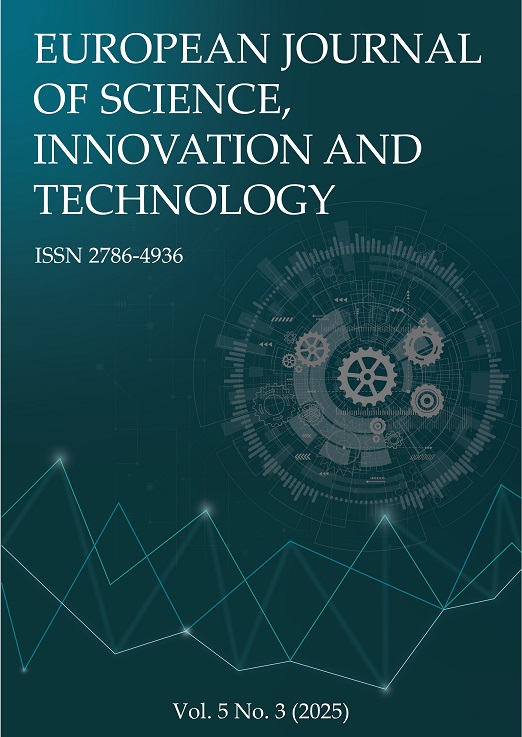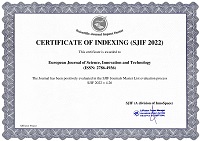Original String Theory Can Interpret Dark Matter and Dark Energy through Multiverse
Abstract
Based on the ten-dimensional spacetime of the original String Theory, the Anthropic Principle and Causality were applied to investigate the structure of space and time, allowing the Universe to be divided into three distinct cosmoses. Drawing from newly discovered conceptions in the deep interior of the Earth, a new Earth model was reconstructed. By applying geophysics to analyze the Earth’s interior and using a simplification method to calculate the data of the new Earth model, a dark planet—approximately 1.33 times the mass of Mars—was identified. It is located within the Earth, yet exists in a different cosmos from our own. Using cosmological parameter data ranging from the 1-year WMAP results to the Planck satellite 2018 results, it is found that dark energy has gradually decreased; meanwhile, the total amount of matter has increased by an equivalent amount. Those observations align with the predictions of the Big Bang Theory, indicating that the currently dark energy may be the residual energy left over from the early Universe following the Big Bang. According to this data, the high-energy-density cosmoses are expanding rapidly than our low-energy-density cosmos; therefore, dark matter in other cosmoses exerts a gravitational “drag” on stars and galaxies of our cosmos, leading to the observed accelerating expansion of the Universe.
References
Ade, P.A.R., et al., Planck Collaboration. (2016). Planck 2015 results. XIII. Cosmological parameters. Astronomy & Astrophysics, 594(A13), 32, Table 4. Parameters of the base ΛCDM cosmology computed from the 2015 baseline Planck likelihoods, Planck TT+ low P.
Aghanim, N. et al., Planck Collaboration. (2020). Planck 2018 results. VI. Cosmological parameters, Astronomy & Astrophysics, 641(A6), 7, Table 1. Base-ɅCDM cosmological parameters from Planck TT, TE, EE + lowE + lensing, Plik best fit.
Alboussière, T., Deguen, R. & Melzani, M. (2010). Melting-induced stratification above the Earth’s inner core due to convective translation. Nature, 466, 744–747.
Anderson, J. (1988). Planet X - Fact or Fiction? Planetary Report, 8(4), 6-9.
Anderson, J. D. et al. (2002). Study of the anomalous acceleration of Pioneer 10 and 11. Physical Review D, 65, 082004.
Bartusiak, M. (1988). Wanted: Dark Matter. Discover, Dec., 63-69.
Bennett, C. L., et al. (2013). Nine-year Wilkinson Microwave Anisotropy Probe (WMAP) Observations: Final Maps and Result. The Astrophysical Journal Supplement, WMAP, 208(2), 20.
Buchbinder, G. G. R. (1968). Properties of the Core-Mantle Boundary and Observations of PcP. J. Geophys. Res, 73, 5901.
Casertano, S., Iben, I. & Shilds, A. (1993). The Hyades Cluster-Supercluster Connection: Evidence for a Local Concentration of Dark Matter. Astrophysical Journal, Part 1, 410, 90-98.
Chandler, S. C. (1891). On the variation of latitude, Astronomical Journal, 11, 59–61, 65–70.
Condie, K. C. (1997). Plate tectonics and crustal evolution (4th Ed.). Butterworth-Heinemann, p. 5.
Derr, J. S. (1969). Internal Structure of the Earth Inferred from Free Oscillations, J. Geophysics. Res., 74, 5202–5220.
Deutsch, D. (2010). Apart from Universes /Many Worlds?! Everett, Quantum Theory, and Reality. Oxford University Press. 542–552.
Dvali, G. (2004). Out of the Darkness. Scientific American, February 2004, 68-75.
Dziewonski, A. M. & Anderson, D. L. (1981). Preliminary Reference Earth Model. Phys. Earth Planet, Inter., 25, 297–356.
Ellis, G. F. R., Martens, R., & MacCallum, M. A. H. (2012). Relativistic Cosmology. Cambridge, UK: Cambridge University Press., 146–147.
Everett, H. (1957). Relative State Formulation of Quantum Mechanics. Reviews of Modern Physics., 29, 454–462.
Flandern, T. V. (1981). The renewal of the Trans-Neptunian planet search. Bulletin of the American Astronomical Society, 12, 830.
Garland, G. D. (1979). Introduction to Geophysics (2nd ED.). W. B. Saunders Company, Toronto, Canada, 4–8, 28–30, 44–46, 130, 387–389.
Gross, R. S. (2000). The Excitation of the Chandler Wobble. Geophysical Research Letters, 27(15), 2329–2332.
Hecht, J. (1995). Buried treasure from hot heart of the Earth. New Scientist, 19, 16.
Herndon, J. M. (1993). Feasibility of a nuclear fission reactor at the center of the Earth as the energy source for the geomagnetic field. Journal of Geomagnetism and Geoelectricity, 45, 423–437.
Ho, Hsien-Jung. (1993). Reconstruction of the Earth Model and Discovery of the Interior Dark Matter. The First Cross-Strait UFO Symposium, On 7 December 1993 Beijing, China. https://doi.org/10.29924/REMDM.DB/Collection0001
Ho, Hsien-Jung. (2022). The 3-Cosmic Framework of the Universe Can Hold Dark Matter and Dark Energy. Journal of Scientific and Engineering Research, 9(4), 67–77. https://doi.org/10.5281/zenodo.10518988
Ho, Hsien-Jung. (2024a). Dark matter can be revealed inside the earth by string theory. International Journal of Renewable Energy and Environmental Sustainability (IJREES), 9(4), 1-28. https://doi.org/10.5281/zenodo.13982835.
Ho, Hsien-Jung. (2024b). Dark Matter and Dark Energy can be Held in the 3-Cosmic Framework Through Original String Theory. Academic Journal of Science, Engineering and Technology, 2024, 9(5), 1-13. https://doi.org/10.5281/zenodo.13982179
Ho, Hsien-Jung. (2025). Dark energy can be revealed using the 3-osmic framework of a Universe with string theory. International Journal of Renewable Energy and Environmental Sustainability, 10(1), 1-11. https://doi.org/10.5281/zenodo.14959662
Horton, F. et al. (2023). Highest terrestrial 3He/4He credibly from the core. Nature, 623, 90–94.
Kapteyn, J. C. (1922). First attempt at a theory of the arrangement and motion of the sidereal system. Astrophysical Journal, 55, 302–327.
Knopoff, F. (1965). A preeminent seismology. Phys. Rev., 138(A), 1445.
Komatsu, E., et al. (2009). Five-Year Wilkinson Microwave Anisotropy Probe (WMAP) Observations: Cosmological Interpretation. The Astrophysical Journal Supplement Series, 180(2), 371, Table 14. Comparison of ΛCDM Parameters from WMAP+BAO+SN with Various SN Compilations, Union.
Komatsu, E., et al. (2011). Seven-Year Wilkinson Microwave Anisotropy Probe (WMAP) Observations: Cosmological Interpretation. the Astrophysical Journal Supplement Series, 192(2), 3, Table 1. Summary of the Cosmological Parameters of ΛCDM Model, WMAP+BAO+H0 Mean.
Lemaître, G. (1927). Un Univers homogène de masse constante et de rayon croissant rendant compte de la vitesse radiale des nébuleuses extra-galactiques. Annales de la Société Scientifique de Bruxelles, A47, 49-59.
Lyttleton, R.A. (1973). The end of the iron-core age. Moon, 7, 422–439.
Messling, N., Willbold, M., Kallas, L., Elliott, T., Fitton, J. G., Müller, T., & Geist, D. (2025). Ru and W isotope systematics in ocean island basalts reveals core leakage. Nature, 642, 376–380. https://doi.org/10.1038/s41586-025-09003-0.
Morelli, A. & Dziewonski, M. (1987). Topography of the core-mantle boundary and lateral homogeneity of the liquid core. Nature, 325, 678–683.
Mundl, A. et al. (2017). Tungsten-182 heterogeneity in modern ocean island basalts. Science, 356, 66–69.
Mundl-Petermeier, A. et al. (2020). Anomalous 182W in high 3He/4He ocean island basalts: fingerprints of Earth’s core? Geochim. Cosmochim. Acta, 271, 194–211.
Oort, J. H. (1932). The force exerted by the stellar system in the direction perpendicular to the galactic plane and some related problems. Bulletin of the Astronomical Institutes of the Netherlands, 6, 249–287.
Penzias, A. A. & Wilson, R. W. (1965). A Measurement of Excess Antenna Temperature At 4080 Mc/s, Astrophysical Journal Letters, 142, 419–421.
Perlmutter, S., Aldering, G., Goldhaber, G., Knop, R. A., Nugent, P., Castro, P. G., ... & Supernova Cosmology Project. (1999). Measurements of Ω and Λ from 42 high-redshift supernovae. The Astrophysical Journal, 517(2), 565-86.
Ramsey, W. H. (1948). On the constitution of the terrestrial planets. Mon. Not. Roy. Astron. Soc., 108, 406–413.
Riess A. G. et al. (High-z Supernova Search Team). (1998). Observational Evidence from Supernovae for an Accelerating Universe and a Cosmological Constant. Astronomical Journal, 116(3), 1009-1038.
Rizo, H. et al. (2019). 182W evidence for core-mantle interaction in the source of mantle plumes. Geochem. Perspect. Lett., 11, 6–11.
Scherk, J. & Schwarz, J. H. (1975). Dual field theory of quarks and gluons. Physics Letters, B, 57, 463- 466.
Spergel, D. N., Verde, L., Peiris, H. V., Komatsu, E., et al. (2003). First Year Wilkinson Microwave Anisotropy Probe (WMAP) Observations: Determination of Cosmological Parameters. Astrophys. J. Suppl. 2003, 148(1), 192, Table 10. Basic and Derived Cosmological Parameters: Running Spectral Index Model.
Spergel, D.N., et al. (2007). Three-Year Wilkinson Microwave Anisotropy Probe (WMAP) Observations: Implications for Cosmology. The Astrophysical Journal Supplement Series, 170(2), 380, Table 2. Power-Law CDM Model Parameters and 68% Confidence Intervals, 3 Year + ALL Mean.
Stsrobinskii A.A. & Zel'dovich, Za. B. (1988). Quantum Effects in Cosmology. Nature, 331, 25.
Susskind, L. (2006). Father of String Theory Muses on the Megaverse. The New York Academy of Science Publications, April 14, 2006.
Walker, R. J., Morgan, J. W. & Horan, M. F. (1995). Osmium-187 in some plumes: Evidence for core-mantle interaction? Science, 269, 819–822.
Zwicky, F. (1937). On the Masses of Nebulae and of Clusters of Nebulae. Astrophysical Journal, 86, 217.
Copyright (c) 2025 Hsien-Jung Ho

This work is licensed under a Creative Commons Attribution 4.0 International License.


 ISSN
ISSN 











